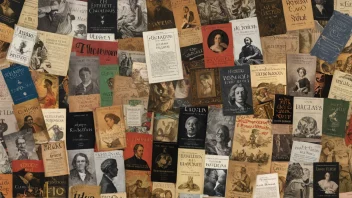Art history, often perceived as a mere chronicle of aesthetic evolution, serves as a vital foundation for modern creative industries. The past informs and enriches the present, providing a treasure trove of ideas, techniques, and narratives that continue to shape artistic expression and innovation. In a world where creativity drives economic growth, enhances cultural identity, and fosters social change, understanding the influence of art history on contemporary practices is essential for artists, designers, marketers, and business leaders alike. This article delves into the multifaceted ways in which art history impacts today’s creative industries, highlighting key movements, influential figures, and the relevance of historical context in modern creation.
The Interplay Between Historical Movements and Contemporary Trends
Throughout history, various artistic movements have emerged as responses to societal changes, technological advancements, and cultural shifts. From the Renaissance's emphasis on humanism and individualism to the bold expressions of Abstract Expressionism, these movements have left indelible marks on the creative processes of today. For instance, the minimalist aesthetics of the 1960s continue to inspire contemporary designers across industries, emphasizing simplicity and functionality.
Moreover, the rise of digital art and design can be traced back to earlier artistic explorations. The use of technology in art was pioneered by artists like Nam June Paik, whose video art challenged traditional definitions of creativity and opened new avenues for artistic expression. Understanding these historical contexts allows modern creators to draw from a rich palette of techniques and ideas, creating works that resonate with both historical significance and contemporary relevance.
Influence on Design and Branding
In the realm of design and branding, art history plays a crucial role in shaping visual identities. Many brands leverage historical styles to evoke specific emotions and associations in their target audiences. For instance, the use of Art Deco elements in branding often conveys luxury and sophistication, harkening back to the glamour of the 1920s and 30s.
Furthermore, design schools often incorporate art history into their curricula, instilling a deep appreciation for the evolution of visual culture. Students learn not only the technical skills required for graphic design or fashion but also the significance of historical references. This understanding enables them to create work that is not only aesthetically pleasing but also culturally and historically informed.
The Role of Art History in Advertising and Marketing
Advertising and marketing have long drawn inspiration from art history to craft compelling narratives and visuals. The techniques employed by historic artists—such as composition, color theory, and symbolism—are integral to creating effective advertisements that capture attention and convey messages. For example, the strategic use of color in marketing can be traced back to the color theories developed by artists like Wassily Kandinsky and Piet Mondrian.
Moreover, the storytelling aspect of art history plays a significant role in modern marketing campaigns. Brands that tell a story that resonates with their audience often find greater success. This narrative-driven approach can be seen in campaigns that evoke historical themes or reference iconic artworks, bridging the gap between the past and present to create a deeper connection with consumers.
Art History’s Impact on Social Movements and Cultural Identity
Art has always been a reflection of societal values, and this is particularly evident in the way art history informs contemporary social movements. The visual language of art has been a powerful tool in advocating for change, from the politically charged works of the Dadaists to the vibrant murals of the Chicano movement. Today, artists continue to use their work as a means of social commentary, drawing inspiration from historical movements to address current issues such as inequality, climate change, and identity politics.
In addition, art history plays a critical role in the preservation and promotion of cultural identity. Many communities use historical art forms to celebrate their heritage and convey their stories. By understanding the historical context of these art forms, creators can ensure that their work is both respectful and representative of their cultural narratives, fostering a sense of pride and belonging.
The Future of Creative Industries Through the Lens of Art History
As we move further into the 21st century, the future of creative industries will undoubtedly continue to be shaped by the lessons of art history. The growing emphasis on sustainability and ethical practices in design and production echoes historical movements that prioritized craftsmanship and community. Artists and creators are increasingly looking to the past to inform their responses to contemporary challenges, blending traditional techniques with modern technology to create innovative solutions.
Moreover, the digital age presents new opportunities for the exploration of art history. Virtual reality, augmented reality, and other digital platforms allow for immersive experiences that can bring historical art movements to life, making them accessible to wider audiences. This fusion of technology and art history not only enhances educational experiences but also inspires new forms of creativity and expression.
In conclusion, art history is not merely a record of past accomplishments; it is a dynamic force that continues to influence and inform today’s creative industries. By examining the interplay between historical movements and contemporary practices, we gain valuable insights into the evolution of artistic expression. As designers, marketers, and artists draw from this rich legacy, they not only honor the past but also pave the way for future innovations. Embracing the lessons of art history will ensure that the creative industries remain vibrant, relevant, and deeply connected to the human experience.






